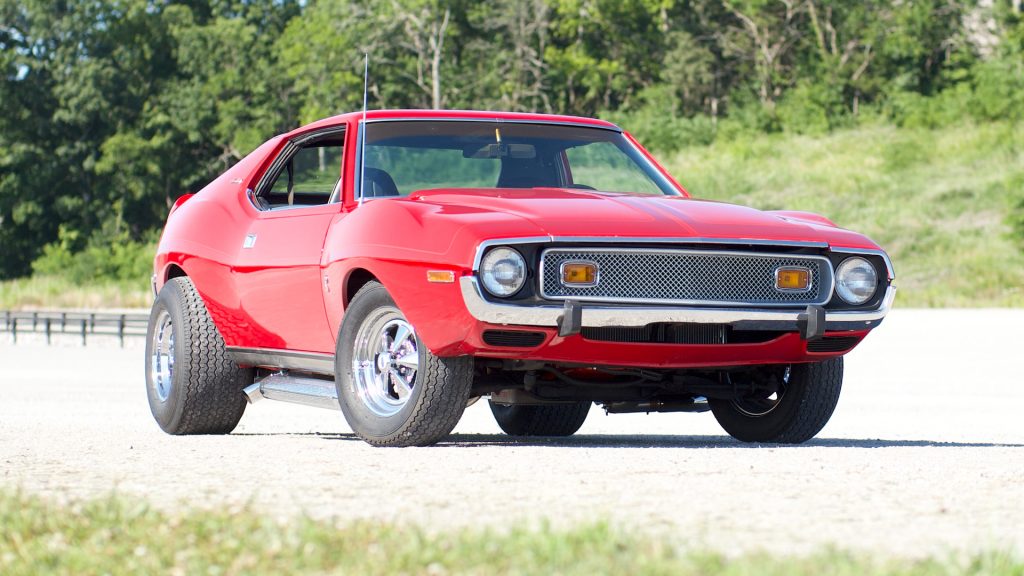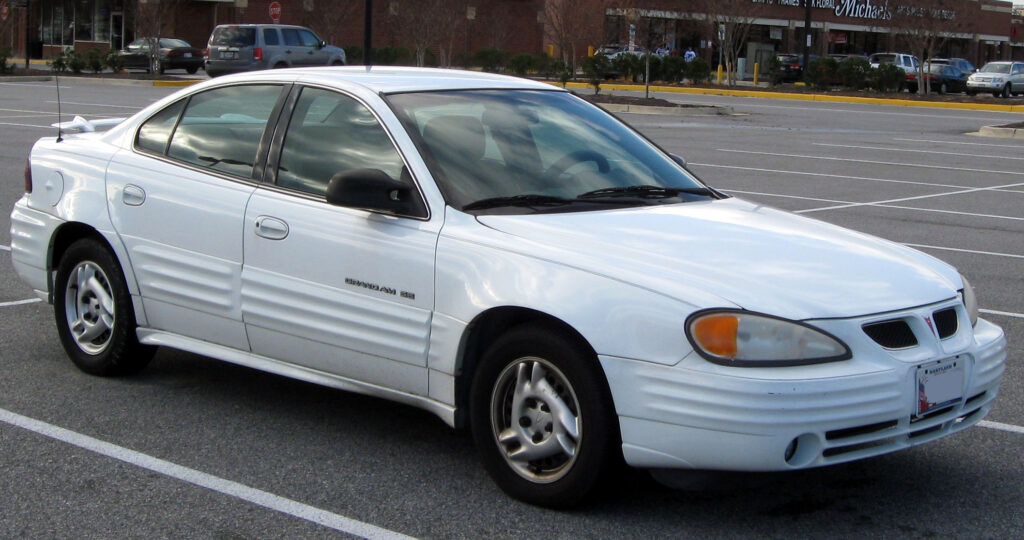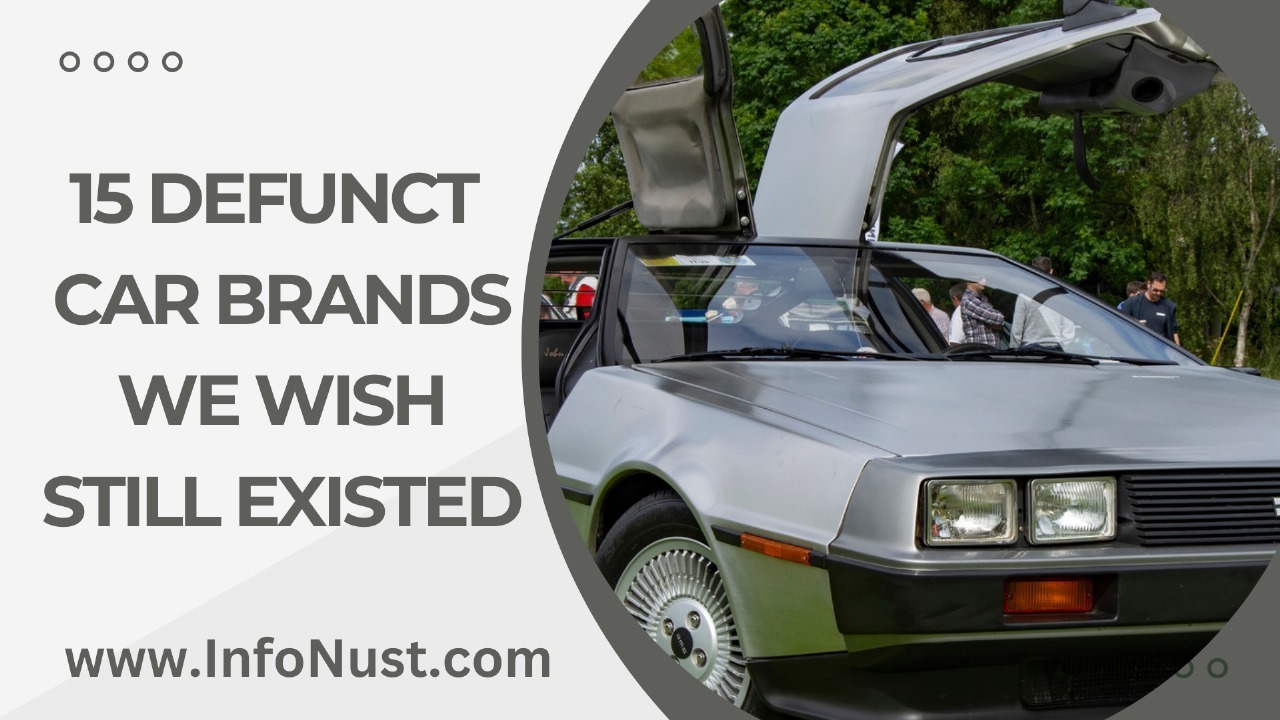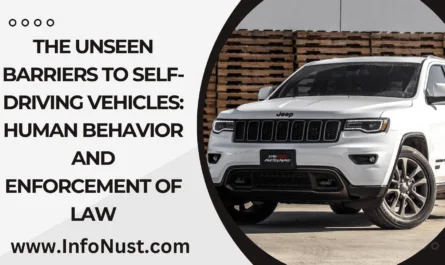15 Defunct Car Brands We Wish Still Existed. The number of automakers which have been in existence since the close 18th century was astounding. The reasons vary from economic recession and depression and mismanagement, shifting trends. Even fraud have destroyed many famous and obscure — brands. In reality, the pages of automotive history are brimming with tales of destruction and death of well-loved cars.
Sometimes once-defunct automakers attain the success they seek through revitalization for example, Bugatti or Spyker. Other attempts to revive their glory go down in the infamous failure. The Stutz brand experienced this type of revival only to fade. Away after which another try was made at revival only to. Like to the plan described by Forbes the following year, be lost, and maybe disappear for good.
Despite these failures and successes It’s often an enjoyable. Perhaps emotionally stimulating exercise to consider the future in which these companies were not influenced by the market pressures and remained in business to witness another race day in the current age. These 10 manufacturers need to be given a second chance in the 21st century.
American Motors Corporation

The underdog in the American auto industry, AMC was an inventive producer of a wide range of popular models. With powerful models such as AMX and the Marlin. Marlin and AMX and the classic Rambler as well as the Eagle. AMC excelled in discovering a niche that was not well-known and providing it with a product that was unlike anything else. If it would have continued to exist despite its disadvantaged status. There is no doubt that the current AMC vehicles would have been constructed from a distinct cloth.
Although it may have produced SUVs due to need to compete. The company most likely would have stayed with its range of fun. Compact cars and wagons that the majority of American manufacturers are now abandoning. To add to that the possibility of a new model to the AMX could offer the C8 corvette some serious American challenge. AMC has always been the small car maker that could be. Which is why it’s interesting to discover what they could’ve done using the incredible engineering and technological advancements of the 21st century.
2. Studebaker Corporation
Another underdog among American producers. Studebaker is known for producing well-constructed and fascinating vehicles. As well as trucks which stood out from the rapidly growing American automobile industry in the latter part of the 1800s. According to the Smithsonian Libraries, Studebaker began by building horses-drawn carriages. Could be the earliest automaker, if it was still in existence in the present. Although it was not an automaker with a high performance. However, it produced an impressive set of V8 engines which included some equipped with superchargers.
One model that could be a stunning modern vehicle could be the Hawk. It was a luxurious coupe that was able to combine V8 power with striking good appearance and comfortable. In the present, it will likely come with a smaller engine geared up by turbo and/or supercharging. As per the Smithsonian Institution, Studebaker also purchased an investment company called the Paxton Corporation, a maker of superchargers. It’s easy to imagine that this relationship which led to modern supercharged rockets utilizing advancements in engineering. And forced induction directly from South Bend, Indiana automaker. Studebaker may be an ferocious rival against Buick or Volvo and is expected to be a contender in the luxury. But not necessarily luxurious market.
3. Duesenberg Motors Company
In the midst of the top ranks of the top luxury car manufacturers in the beginning of the 20th century. Duesenberg was known for creating the best automobiles available to the most demanding and discerning of clients. Due to its high cost of production it was the vehicle that was the preferred choice of the rich including gangsters and actors as per Discovery UK. It wasn’t just that Duesenberg famous for its lavishness. However, it also offered excellent engineering, resulting in one among the strongest production motors of the prewar period.
If it could have been able to survive the Depression. Duesenberg would still be a competitor with Rolls-Royce and Bentley offering a car for the famous and wealthy. That would surpass our luxury brands of today, Lincoln and Cadillac, in leaps and leaps and. A wide range of automatic and hands-free options or turbo-powered power could be found in the modern Duesenberg. Today Duesenberg would be the benchmark of American luxuriousness to which all other. Automakers aspire to in the same way that brands used to be back in the days of.
4. Pontiac

Although the existence of numerous brand names inside. General Motors may have seemed redundant, Pontiac offered unique, enjoyable, and fun alternatives for a long time. While there are valid reasons the reason it went under. Pontiac more often than did not live the promise which was “We Build Excitement.” One of the key aspects for the firm was their selection of cars with a sporty design. That were appealing and enjoyable to drive but were not too expensive.
They were often more sophisticated that their Chevrolet counterparts and provided many more options for creating distinctive models. It is likely that a new Pontiac could include the legendary Trans-Am built on the currently-running Camaro. However, it could very easily grab the helm of the Fiero by introducing a two-seat electric sports car. In the current market, with Chevy and Buick generally producing versions of the identical two-box SUV. Pontiac would be well equipped to establish an exclusive performance brand inside the General Motors family of automobiles. It could be the right the right time to bring all the “excitement” back to the general public.
5. Tucker Corporation
It requires a visionary to confront established and established industrial companies and endeavor to beat them in their own game. This has been the case with Tesla since Elon Musk challenged the conventional idea of the ideal car and what it should do. Then transformed it into a completely new perspective. If Tucker could have Musk-like cash to finance his ideas however, this might not be the situation.
Preston Tucker wanted to bring to market a vehicle. That was a success in all areas where major three cars and their counterparts failed. But they didn’t even realize the failure that was that was taking place. Smithsonian Magazine details the litany of safety features he wished for that included mind-blowing inventions like seatbelts. Cushioned dashboards and windows that could pop out in the case of a crash. This was an era before safety features were integrated into automobile designs.
Tucker The man, as well as the company. Were diminished to ashes due to a fraudulent SEC investigation and sensational news in the form of Wired Magazine. If it weren’t for these tragic circumstances. We could have the safest electric vehicle on American roads sporting the Tucker label in place of Tesla. The concepts Tucker had in mind were revolutionary and a contemporary. Tucker is sure to be on the forefront of automobile advancement if only it could survive.
6. DeLorean Motor Company
With years of experience in running divisions within the largest car manufacturer on Earth. John DeLorean brought lots of efforts and tested ideas to his business. But, great ideas don’t necessarily mean a successful business. The DMC-12 vehicle it was designed by him has made a lasting impression in popular culture. And is still part of the legends of the American automobile fan.
When it was first announced for launch in the year of its launch. The DMC-12 was an automobile that was aimed at an extremely small market. The amount of people who are able to purchase a luxury. Two-seater sports car with almost no functionality is very small. This has always been the case however, the current market appears to have plenty of room for premium automobile manufacturers that produce ridiculously inefficient but insanely powerful machines. A contemporary stainless steel sports car with gullwings could be an option on the market today.
The new DeLorean will surely be electric . However, had it been revived at some point in the first half of 2000. Prior to when the defunct company’s name was known. Delorean could have easily bought an Audi V8 similar to what Spyker did or had AMG develop a powerful turbo V6 that had plenty of power. In the wake of John DeLorean’s demise at the age of 55. His name will remain with a solid inscription in the past and a child named Marty driving 88 mph into the future.
7. Baker Motor Vehicle Company

One of the top sellers during the Brass Era of automobiles. Which lasted from around 1896 to 1915 the Baker Motor Vehicle. Company would be a perfect fit in the current automobile market. Over a century prior to the advent the name Tesla as the world’s leader in electric automobiles. Baker boasted impressive sales of as high as 17 battery-powered cars. Compatible to Classic The Record, which includes among the first cars that was purchased by White House fleet. White House fleet.
Although the ease and efficiency that internal combustion provided quickly overcame. The electrical propulsion’s limitations at one point it was the Baker electric automobile was among America’s most sought-after models. Car and Driver reports that in 1903, an engineer working for Baker Motor Vehicle Company was able to complete. The distance of 201 miles with just one charge, though only when traveling at 12 miles per hour. The contemporary Baker Motor Vehicle Company would make a great addition to the EV revolution. Leveraging its position as a leading innovative innovator in the space.
8. Jensen Motors Limited
Popular with British publics, Jensen’s were original, creative and a powerful car specifically designed for those who were “English gentleman.” From the beginning, Jensen was always more of a coachbuilder. They also built cars for other manufacturers during the period prior to war, adequate to MyAutoWorld. A few of their initial designs were built on top of different manufacturers’ chassis and drivetrain designs.
The later models were completely produced by Jensen however, they were still with other engines of other companies. One of the most popular model was known as the Interceptor which featured a gigantic Chrysler Hemi V8. Australian Jensen Club Magazine states that the Jensen Interceptor FF was the first production car that had all-wheel drive in the year 1966. Being a small and independent company meant they had to combine their resources with others and. As they did, produced incredible machines.
If Jensen Motors exist today. It’s possible that they’d be a unique and clever brand that would benefit from the extensive potential of development at Ford as well as VW to develop quick and enjoyable automobiles that are typically impossible for the majority of people. But are not only affordable for the most affluent. A modern British sports car that is powered by the Hellcat V8 could be an intriguing proposition.
9. Saab Automobile AB
The most quirky of automobile companies, Saab cranked out unique automobiles together small budgets and innovative Swedish engineering strategies. The most notable quirks of the Saab is the placement of the key on the middle of the console. Between the front and back seats, as well as the location of their slanted four-cylinder engine behind. So that the clutch actually located in front of the car. The drive accessories are towards the rear inside the engine compartment and against the firewall.
Saab was a victim of the 2008 financial crisis in the midst of a restructuring by General Motors. Which decided to sell the brand to the most expensive bidder according to The New York Times. The try by the boutique car manufacturer Spyker in order to save. The legendary Swedish brand afloat was an utter failure, with the parts of Saab taken over by an Chinese company, which, like to Motor Trend is now bankrupt, and was later revived in the form of an electric-mobility firm. When it came to the company’s demise, Saab had prototype cars and new platforms the pipeline and had recently launched a brand new Saab 9-5 version. The Spyker-led company was able to create just 3,419 new 9-5 models prior to the end of production as per eSaabparts.com.
It is likely that a more contemporary Saab could have continued to follow this route. Introducing new electric and hybrid models that feature modern design. In the absence of that 2008’s economic crisis there’s no reason to believe that Saab could not exist now.
10. Trabant
Of all the automobiles you would like to have revived, a shabby noisy, smoky, and unreliable rattlebox made in East Germany is not likely to be listed. There are some who question the wisdom of reviving this brand however there are a number of arguments to support it. For those who aren’t familiar you know that Trabant was Trabant was a small car that was produced in the communist East Germany from 1957 to 1990 (production continued following German unification, but it stopped at the end of 1991). It was a tiny compact car that was poorly built that had no power windows, no seats, and, in general, lacking any power whatsoever. It was powered by a two-stroke, two-cylinder air-cooled engine that produced 26 horsepower and an automatic column shifter with four speeds.
According to all reports the car was not a very good automobile, a fact that was confirmed by Motor1. However, for the lucky and faithful socialist party members from the DDR as well as East Germany, it was a precious piece of art. It’s no surprise after the end of the Berlin Wall that the inefficient and outmoded Trabant stopped production. With the present-day automobile industry having very few, if any really small and affordable vehicles Trabant might be able to fit into its own low-end segment.
The idea of college students playing around in a contemporary Trabant complete with its original design isn’t at all a stretch. If vinyl records again be dominant on charts of sales and the charts, there’s no reason Trabant should not be able to, too.
11. Oldsmobile Division of General Motors
Ransom Olds was one of the innovators in the American automobile industry. Although Henry Ford is often erroneously acknowledged as the creator of the auto assembly line however It was Olds who was the first to utilized itand Ford was the first to automatize the production machine (via Robohub). Oldsmobile was bought from General Motors in 1908, operating as an entity that was between the two as a premium brand that provided high-quality cars at an affordable cost.
Oldsmobile produced some fantastic cars during its time. Anyone who was alive in the 1980s is familiar with the Cutlass well since they were the top-selling vehicle throughout America for a while. In 1962, the Jetfire from 1962 is the first production vehicle ever to be turbocharged and the Toronado was the first front-wheel-drive car to make massive block power possible.
One of the accurate reason to revive Oldsmobile is to reintroduce the classic car. Perhaps the crossover and SUV are functional and reliable However, cars are more style and personality. Oldsmobile might be introduced with a few sedans, coupes and wagons equipped with the latest design and features to restore some sanity to American roads. A small selection of stylish cars with luxurious interiors and top-of-the-line amenities at prices lower than luxury models is not available in the market for automobiles today. That’s the ideal new Oldsmobile.
12. Packard Motor Car Company
The Packard Motor Car Company began in 1899, and became one of the most prestigious luxury car manufacturers. In 1903 the time when the price of an Oldsmobile Runabout sold for $650 the price of a Packard cost was $2,600 alike the publication Classics Beyond. A number of the models produced by Packard during the period between wars represent the best models of American automobiles, like the opulent Twin Six, powered by the V12 engine, which had a capacity of 421 cubic inches. Despite the repute it built throughout its existence, Packard went on the decline following WWII and Hagerty states that cost-cutting measures as well as the inability to access credit as well as the merger with Studebaker caused Packard to the scrap heap by 1957.
With Cadillac at the top of in the Luxury segment within the U.S. Lincoln struggling to keep up, maybe the possibility of a Packard revival is exactly what the market requires. Cadillac is headed towards Rolls Royce territory with its new Celestiq. Unlike other American vehicle is competing in the market for luxury automobiles. Packard is a specialized automaker, producing luxurious cars the way it was back in the 1930s with nothing being too costly and a commitment to producing the most lavish automobile. Americans have been there before and there’s no reason why they shouldn’t be able to repeat the feat. Additionally, sales of top-end supercars and other costly models are at record highs, alike to Jalopnik. Therefore it is probable that Packard can be expected find buyers and offer the rest of us a vehicle we will never own.
13. Triumph Motor Company
It was the Triumph Motor Company manufactured cars in England and built on operations that started as an importer of bicycles in 1885. Then manufacturing them three years afterward (via Coventry Telegraph). Manufacturing operations for motorcycles were transferred in the 1930s and continue to operate until today. The automaker has changed ownership several times. But has it has always produced a variety of small-sized cars that were perfect for narrow as well as winding English roads that run through the countryside and cities. The most popular models it export to U.S. Include several open-top roadsters that, despite their an extremely low power output were sporty and enjoyable to drive. Triumph’s demise occurred in the mid-’80s when the collapse of British automobile giant British Leyland, of which Triumph was one of the divisions.
Roadsters with open-tops are not present in the current landscape of automobiles. Minimal, fun-to drive cars that can go-kart are available in a handful of models. Like models like Mazda MX-5 and the much more expensive BMW Z4. With a large portion of the market moving towards electric vehicles. Triumph’s return as a EV convertible that is sporty could be a reality. The EV platform allows it to be easier than ever before to build a variety of automobile models using the same platform. Therefore it’s just an issue of bolting an entirely new vehicle onto the chassis that is electric. Because BMW has already owned and makes the Mini and Mini-X, there’s plans to revive English cars. This is the most sensible option because BMW obtained access to Triumph through the acquisition of Rover in 1994.
14. Holden Ltd.
The elimination from the Holden brand out of the market is a recent change. That saw the last cars being removed from the manufacturing facility in the year 2017 compatible to the GM Authority. Holden started producing cars within Australia in 1917. By 1942, it had been the subsidiary of GM in Australia (via The Guardian). This arrangement was in place for many years and saw Holden offering Australians with exclusive regional versions of GM automobiles. As well as a variety of indigenous models. One of the most well-known Holden across North America is the final version of the Pontiac GTO. An imported and modified Holden Monaro with an Aussie version of the flame-breathing LS V8.
Although the majority of Holden cars are similar or like the other GM versions. The company also produced over the years a distinct mixture of car and truck they called an Ute. This North American market last saw one of these after the El Camino was discontinued in the 1980s. However Holden continued to make until the end of. Auto enthusiasts long at the prospect of seeing the old ute back because a track-ready. Tasable vehicle which can also carry some mulch is a great opportunity for many. Certain companies provide services to convert Australian vehicles to drive left. However, the process is expensive and long-lasting. Holden is a good idea to revive it with the sole aim of providing utes for Americans. A new Holden might be an one-model firm that focuses on this particular market.
15. The Rover Company Ltd.
One of Britain’s most well-known automobile brands is Rover that was a mainstay of British roads for the majority through the twentieth century. In the beginning, Rover concentrated on building cheap and compact cars with little accessories or luxury. In the postwar period, Rover began building larger and better-looking automobiles, and eventually became one of the most prominent manufacturers vehicles throughout England (via Classic Rover Club).
Rover was never very well-known within The U.S., but for the Brits in the past, Rovers were a symbol of British quality at a price that was less expensive than Rolls Royce or Bentley. In addition, Rover created some intriguing automobiles, including an obsolete Buick 3.5-liter V8 to run for over a half century. Richard Hammond states in an old Top Gear segment that the queen had the Rover P5 herself. The more modern Rover SD1, which was imported into in the U.S. in small numbers of 1,100 like to Autoweek It is an original and intriguing car that has unique and appealing design.
The Rover name is also owned by BMW and this could provide an chance for the German firm to bring it back to the market as an expensive model that is just beneath BMW with respect to cost and style. With an integrated manufacturing and sales network all that’s remaining task is getting some designers working. The Queen might be gone however, her beloved Rover does not have to be also.
Q&A
What cars don t exist?
Our Two Cents: Dream Vehicles That Don’t Exist
- Chevrolet.
- Cameron Neveu.
- Elysian Aircraft.
- Brandan Gillogly.
- 1995 Ford SHO-Star concept minivan with Taurus SHO powertrain. Ford.
- GM.
What British automobile marques are no longer in use?
Austin, Morris, Rover, Riley, Triumph and Wolseley were all Great British brands that were attracted and then lost to the masterclass of poor management which was British Leyland. Alvis was able to trace its roots to 1919, and was among Britain’s top creative automakers, fell victim to exactly the same end.
What car brand is discontinued?
Dead brands include Pontiac, Plymouth, Oldsmobile, and Mercury.





Simply wish to say your article is as surprising. The clearness in your submit is just great and that i could suppose you are a professional on this subject. Well together with your permission allow me to snatch your feed to stay updated with drawing close post. Thank you a million and please keep up the gratifying work.
I like the helpful info you provide in your articles. I will bookmark your weblog and check again here regularly. I am quite sure I will learn a lot of new stuff right here! Good luck for the next!
I have observed that fees for on-line degree professionals tend to be an excellent value. For example a full Bachelors Degree in Communication from The University of Phoenix Online consists of 60 credits with $515/credit or $30,900. Also American Intercontinental University Online gives a Bachelors of Business Administration with a full school element of 180 units and a price of $30,560. Online learning has made having your certification been so detailed more than before because you can easily earn the degree in the comfort in your home and when you finish working. Thanks for all other tips I have certainly learned through your website.